Author: Scott KLEINE, Bryan K. LEES & Malcolm SOUTHWOOD Date: 2014-9-7 20:29:29
The second most commonly observedmorphology is dramatic, mirrorlustrous,golden gem baryte with sharp,arrowhead-type serrations on the sideedges. These thin, diamond shaped crystalsrepeatedly expand out and then contractback with up to seven repetitionsper crystal, with individuals up to 2 cmwide and 5 cm long.
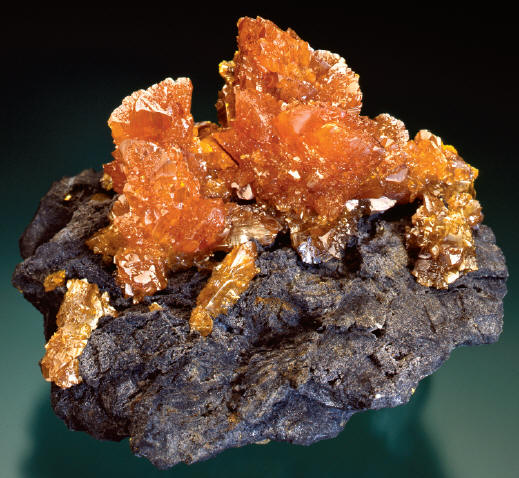
Orpiment on matrix; 12 cm wide. Collector’s Edge specimen. J. Scovil photo.
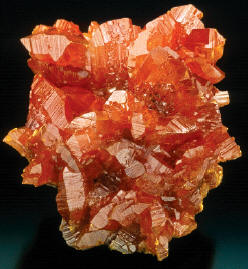
Orpiment from Cut 62; 5.4 cm high. Collector’s Edge specimen. J. Scovil photo.
The third form occurred as twostage,sceptered, prismatic baryte crystalsto 5 cm long, 1 cm wide and 0.5 cmthick. These elongated crystals were attackedand subsequently etched by hydrothermalfluids, after which a secondgeneration of mirror-lustrous, gemmygolden baryte scepter growth capped theterminations. Doubly terminated “dumbbell”examples of these baryte sceptersare particularly interesting, especiallywhen seen growing on orpiment.

Orpiment from Cut 62; 10.2 cm wide. Azurite Corp. specimen. J. Scovil photo.
The rarest of the four baryte morphologiesoccurred as very delicate,nearly paper-thin, tabular-prismatic, lustrouscrystals to 3 cm, pale gold in colorand spread out into semiparallel, floralpatterns. A few baryte and orpimentcombination plates exceeding 20 cmwere recovered, although these largerpieces are on jasperoid matrix and tendto show a lot of baryte but just a fewscattered orpiment crystals.
Microcrystalline pyrite, realgar andstibnite have been found in or near theore zones. The pyrite is commonly seenas a dusty, sooty-looking dark layer onthe rock matrix. Finely disseminatedgold is also present in these arsenic richzones, although it is seldom visible to thenaked eye.
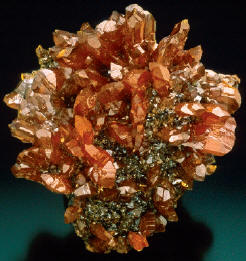
Orpiment from Cut 62; 7.1 cm high. Collector’s Edge specimen. J. Scovil photo.
The discoveries of orpiment in Cut62 and Cut 20 of the Twin Creeks Megapit are exhausted, and much of thefold structure controlling the location ofthe mineralized pockets is completelymined out. However, there are placeswithin the walls of the current pit shellthat contain orpiment zones intersectedby diamond drilling. Unfortunately, these zones coincide with lower gold gradesand are not part of the current miningplan although this could change, perhaps,under different economic conditions.

Orpiment from Cut 62; 9.6 cm wide. Collector’s Edge specimen. J. Scovil photo.
In quality terms, Twin Creeks orpimentis at least the equal of specimen material from the Quiruvilca mine inPeru, and from Shimen, in China.

Orpiment from Cut 62; 9.5 cm wide. Collector’s Edge specimen. J. Scovil photo
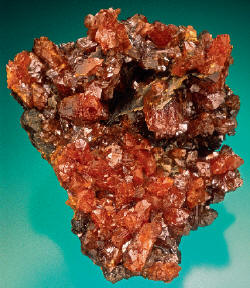
Orpiment from Cut 62; 13.3 cm wide.Collector’s Edge specimen. J. Scovil photo.
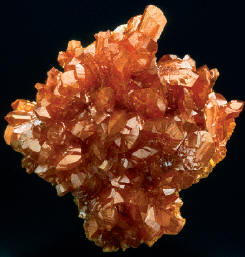
Orpiment from Cut 62; 6.5 cm high. Collector’s Edge specimen. J. Scovil photo.
The Twin Creeks orpiment storyis remarkable not only for the recoveryof numerous world class mineral specimens,but also for the extensive cooperation between a major mining company(Newmont) and an organizationthat specializes in specimen extraction(Collector’s Edge). Sadly, partnershipsof this nature are seldom likely tobe encouraged in today’s mining industry.










 YueGongAnBei 44051102000467
YueGongAnBei 44051102000467


 |
|